Please Note: This post may contain affiliate links. If you click one of them, we may receive a commission at no extra cost to you. As an Amazon Associate, I earn from qualifying purchases.
Last Updated on November 2, 2025 by Kevin Collier
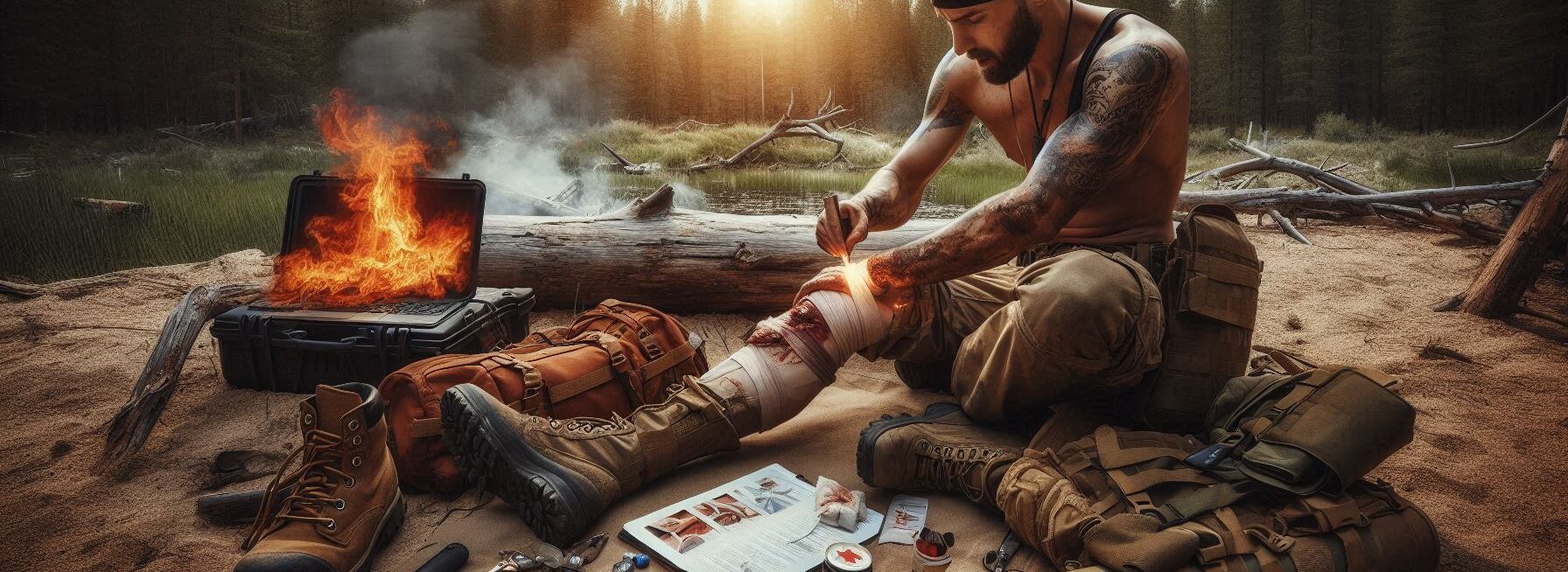
Top Takeaways and Key Concepts
- Clean scrapes immediately with clean water and cover with sterile bandages.
- Elevate and ice sprains or strains, then wrap with elastic bandages.
- Cool burns under running water for 10 minutes, then cover safely.
- Treat insect bites by washing, icing, and applying antiseptic or cream.
- Prevent hypothermia or heat exhaustion by seeking shelter and hydrating promptly.
So, you’re ready to channel your inner Bear Grylls. That’s awesome! Seriously, high five! But before you unleash your wild side, let’s chat about something real—injuries. Because, let’s face it, they happen, usually when you least expect it.
Picture this: you’re having a blast on a hike, and bam! You trip over a little rock. Or maybe you think you’re a pro at tree climbing, and your foot gets all tangled. Ouch! Knowing how to handle these little hiccups can turn a “fun day” into a great memory instead of a drama fest.
Scrapes are super common. They might sting a bit, but don’t worry. Just clean the cut with some water—if there's any nearby—or a clean cloth. If you’ve got a first-aid kit, now is the time to shine! Slap on a bandage, and you’ll be back to your adventure before you know it.
For twisted ankles, oh boy, that’s a bit trickier. Keep that foot up, like you’re on a throne. Ice it, if you can find some. Just a bag of ice or even a chilly can of soda will do. Last thing you want is to miss out on the fun because your foot hurts. Can you imagine?
Having some band-aids and antiseptic wipes tucked away is like carrying a little safety net. You’re definitely going to want those. Plus, there's a certain sweetness in getting to help a buddy when they take a little tumble. Suddenly, you’re the hero with all the answers.
So, keep an eye out for those little bumps in the road—or trails! Embrace the fun! If you get a tiny scrape or twist an ankle, you're still on track for the adventure of a lifetime. Just remember, the wild can be wild, and that’s okay. Your stories of survival will be even better!
Scrapes and Cuts: The Wilderness Badge of Honor
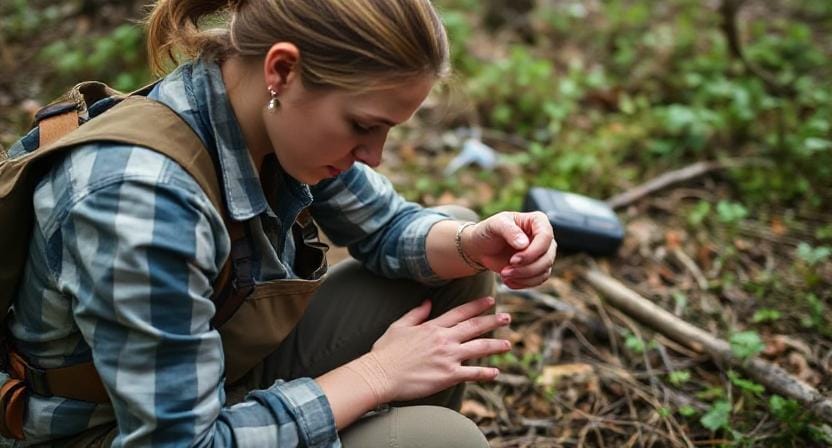
First off, let’s address scrapes and cuts. If you’re out in the wilderness and not getting scratched up by branches or tripping over rocks, are you even doing it right? When those minor wounds happen—and trust me, they will—here's what to do.
*** Shop for Survival Gear - Tools - Kits ***
Survival Gear - Bags and Backpacks - Knives - Boots/Footwear - Communication
Outdoor Cooking - Gloves - Hydration - Dry Boxes - Water Filtration Systems
Tents - Sleeping Bags - First Aid Kits - Multi-Tools - Flashlights - Fire Starters
Navigation - Survival Food - Night Vision - Headlamps - Stun Guns - Binoculars
Start by cleaning the wound. I know this sounds like something you'd hear from your mom after falling off your bike as a kid, but it’s crucial! Use clean water (not from that suspicious-looking puddle) to rinse away dirt and debris.
If you've got antiseptic wipes in your first aid kit, now is their time to shine! Just don’t use them on any food items unless you're going for a unique flavor profile.
Next comes the bandaging part. Cover that wound with a sterile bandage or gauze pad. Why? Because nothing says “I’m tough” like walking around with a visible battle scar wrapped in gauze. Plus, keeping it covered helps prevent infection—unless you're looking for an excuse to avoid work because of “wilderness-related injuries.”
Sprains and Strains: The Art of Not Being Stupid
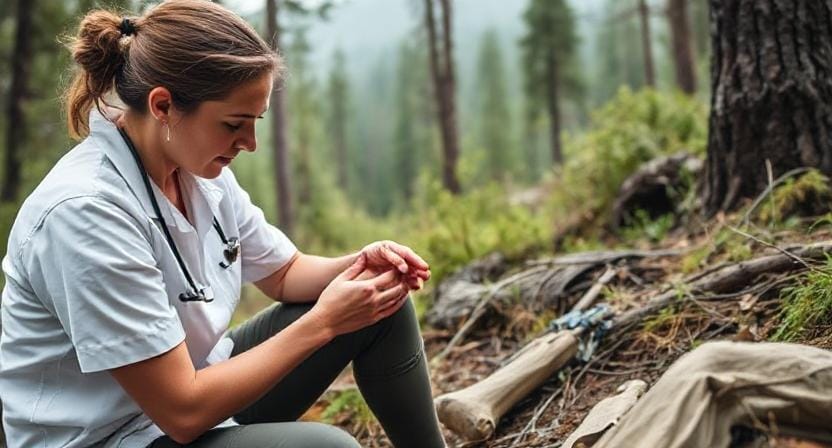
Ah yes, sprains and strains—the classic result of trying to impress everyone with your rock climbing prowess or simply misjudging where solid ground is located. If you find yourself limping around like an injured deer after stepping wrong on a trail, here's how to handle it.
First things first: stop moving! This isn’t an Olympic sprint; it's about preserving what little mobility you have left. Sit down somewhere comfortable (preferably not on a thorn bush) and elevate the affected limb if possible. Applying ice wrapped in cloth can help reduce swelling—just be careful not to freeze anything important!
Now comes my favorite part: wrapping it up! Use elastic bandages if you've got them handy; they’re great for compression without turning your foot into a sausage link. And remember—rest is key here! You don’t want to end up hobbling back home while explaining why you thought attempting parkour was wise during family camping trips.
Burns: When Campfire Cooking Goes Wrong
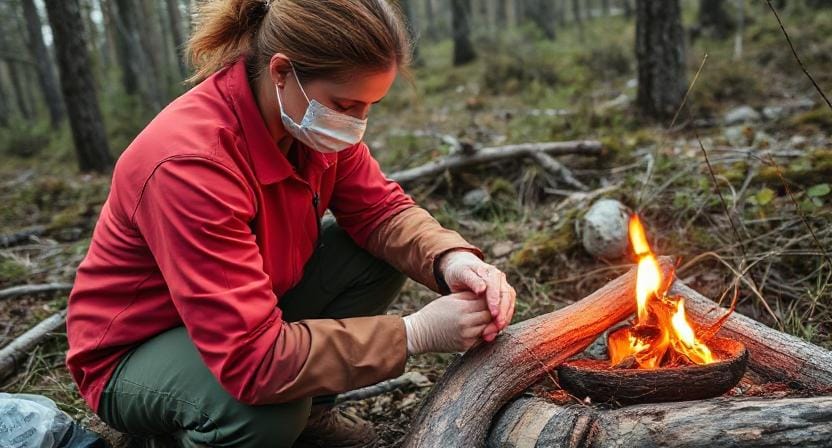
Let’s be honest: campfire cooking can turn gourmet when done right but also resemble scenes from horror movies when things go awry. A nasty burn can quickly ruin your outdoor experience faster than Uncle Bob telling his infamous bear story again.
If you get burned (and not just by embarrassment), cool the area immediately with running water for at least 10 minutes—not ice cold water; we’re not trying to shock your system further here! After cooling down that singed skin, gently pat it dry with a clean towel.
Covering burns is essential too—use non-stick dressings if available. And please refrain from slathering butter or other kitchen condiments on it; that might’ve worked well in grandma's kitchen but definitely not here! Keep monitoring for signs of infection because no one wants their trip turned into an impromptu medical drama.
Insect Bites and Stings: Nature's Annoyances
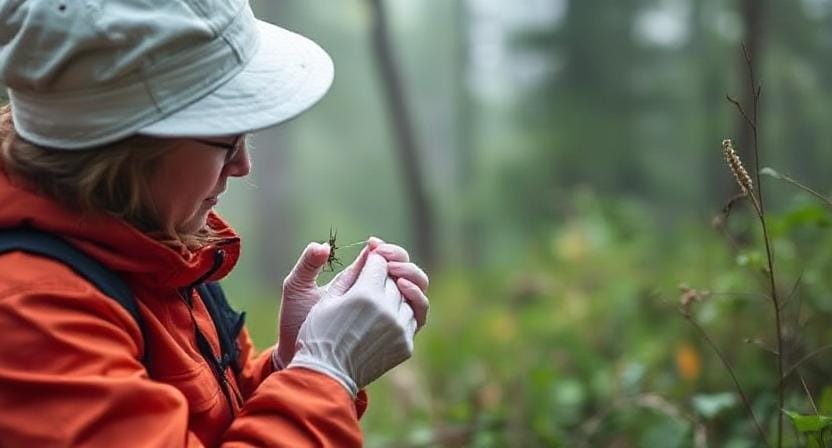
What’s worse than mosquitoes buzzing around during dinner? Getting bitten by one! Insect bites can range from mildly irritating (like that annoying itch) to serious allergic reactions (cue dramatic music). Here’s how I manage those pesky invaders.
For minor bites, wash the area with soap and water—it helps prevent infections caused by scratching at itchy spots like some crazed animal desperate for relief. Applying ice packs can help reduce swelling too; just make sure they’re wrapped so you don’t freeze yourself along with the bite!
If you get stung, especially by a bee, you should take out the stinger right away with tweezers (if you have them). If you brought any antiseptic cream or hydrocortisone ointment with you on this great excursion, put it on now.
Know Your Limits When It Comes to Hypothermia and Heat Exhaustion
Finally, let's talk about hypothermia and heat exhaustion, which are the two most extreme cases of temperature control going wrong while camping in the woods.
Hypothermia happens when your body temperature drops too low, usually because you were outside in the cold for too long. For example, when you are waiting for someone who forgot how long marshmallows take to catch fire… Again!
To treat hypothermia properly, you need to act quickly. Get indoors or find shelter away from wind, rain, or snow as soon as possible! Take off your wet clothes carefully, and then wrap yourself in warm blankets or sleeping bags until you are completely warm again.
On the other hand, heat exhaustion develops when the temperature gets too high without enough breaks for water, such when you're hiking in the sun and chasing after dogs who have gotten away…
To get out of this bad situation, you need to find shade right away and drink a lot of fluids (water is best). Resting till the symptoms go away should help you get better quickly!
Frequently Asked Questions
How should I clean a scrape in the wilderness?
Rinse the wound gently with clean water, remove dirt, and cover it with a sterile bandage to prevent infection.
What’s the best way to treat a sprain or strain outdoors?
Elevate the injured limb, apply ice if available, and wrap it with an elastic bandage for compression and support.
How do I treat a burn from a campfire or hot cookware?
Cool the burned area under running water for at least 10 minutes, dry gently, and cover with a clean non–stick dressing.
How should I handle common insect bites?
Wash the affected area, apply ice to reduce swelling, and use antiseptic or cream to ease irritation and prevent infection.
What should I do if someone shows signs of hypothermia?
Get them into shelter, remove wet clothing, insulate them with dry layers, and gradually warm the body.
How do I recognize heat exhaustion during a hike?
Look for heavy sweating, dizziness, or fatigue, then move to shade immediately and hydrate to cool the body down.
Should I carry a first aid kit while hiking?
Yes, a kit with bandages, antiseptic wipes, and wraps helps you respond quickly to scrapes, sprains, and other minor injuries.
Suggested Resources:
Basic First Aid Guide
https://www.redcross.org/get-help/how-to-prepare-for-emergencies/first-aid.html
Wilderness Medicine
https://www.wildernessmedical.com/
CPR & First Aid Training
https://www.cprcertification.com/

Kevin Collier is a seasoned survivalist and expert in prepping and homesteading, contributing to WiseSurvive.com. With a deep-rooted passion for self-sufficiency and outdoor survival skills, Kevin shares practical advice, strategies, and resources to help individuals prepare for any challenge. His informative articles cover a range of topics, from essential survival techniques to sustainable living practices, empowering readers to thrive in any situation. Whether you're a novice or a seasoned prepper, Kevin's insights will inspire you to take charge of your readiness and build resilience for the future.




